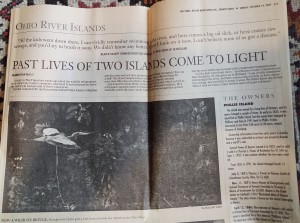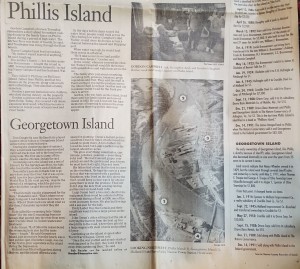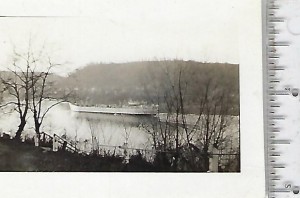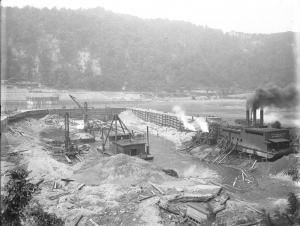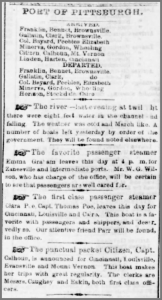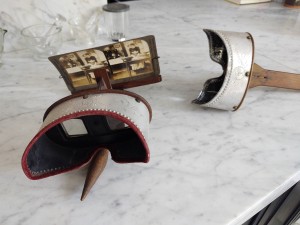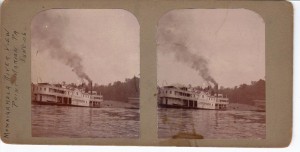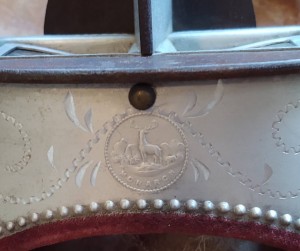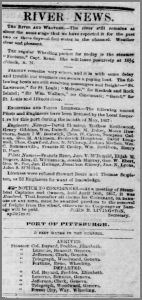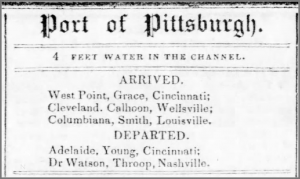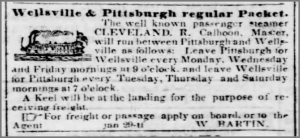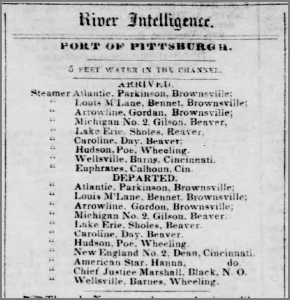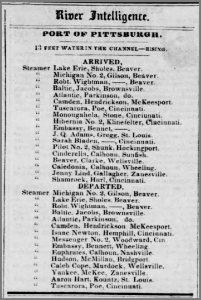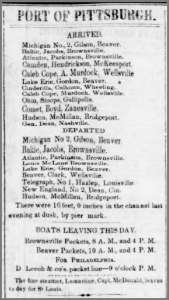Accidentally found an interesting bit of Georgetown history this evening. The Georgetown Lyon men were listed as steamboat engineers on many of the Poe family steamers. According to an ancestry.com hint, Samuel C Lyon’s wife, Louisa Long (b1842-d1914), was awarded a survivors pension for his Civil War service. The pension was awarded by the Senate and House of Representatives of the USA for his service as assistant engineer on the ram TD Horner which is listed in the Dictionary of Transports and Combatant Vessels, Union Army, 1861-1868 compiled by Charles Dana Gibson and E Kay Gibson reproduced in 1995. The pension, approved by Congress on 8 Mar 1904, paid Louisa a pension at the rate of $12 per month.
To the best of my knowledge, none of the Georgetown captains received pensions for their service as captains, pilots, and owners of civilian transports. They received zero compensation for the loss of their boats – str Clara Poe and Str Horizon. So, I was surprised to see this official notice of a pension.
In the Gibsons dictionary, the sternwheeler TD Horner was purchased by Charles Ellet on 18 May 1862 at Pittsburg(h) for inclusion in the Ellet Ram Fleet. That ram fleet became part of the Mississippi Marine Brigade which served in the Red River Expedition in the spring of 1864. The TD Horner was last located at Louisville on 30 Jun 1865. No other details on the actions of the TD Horner were listed.
Before today I had assumed that Samuel C Lyon was an engineer during the Civil War on one of the Georgetown steamers commanded by Jacob Poe or Thomas W Poe or George W Ebert. These Georgetown men were Union men. Their beliefs were deeply felt.
Copyright©2021FrancisWNash
All Rights Reserved
No part of this website may be reproduced without permission in writing from the author.

